one. Seedling cultivation techniques; New orchards all use new varieties of new stock, it recommended the use of apple seedlings rootstocks Yimeng Mountain unique sweet tea wild rootstock, local name (wild sweet tea with a high degree of adaptability soil resistant anti-drought conditions are suitable for both multi-temperature range and long life) In order to improve the quality of new orchards, rigorous preparation, enough base fertilizer, digging the desired density setting pit before planting, specifications for 0.6mx0.6m deep 0.6m ,,. separate subsoil and topsoil, base fertilizer / acre fertilizer (organic fertilizer 1500kg-2000kg, according to the local soil can be applied with a small amount of organic fertilizer with sand, (a small amount of 0.1kg potassium fertilizer can be added 0.2kg compound fertilizer 0.2kg each) and the topsoil mixed backfill to the ground 15cm, stepping, full use Land resources, plant spacing 2m x 2m, can also be planted trench 0.6mx0.6m, 3-4 days prior to planting irrigation, before planting in a solution with 700 times thiophanate-methyl or 500 times carbendazim soaked overnight so that the full absorption of water and disinfection of seedlings. After soaking, the roots of the seedlings were placed in a slurry with rooting powder and soaked in a slurry. The plants were planted in a timely manner. Watering was performed immediately after planting, and the soil was covered with a plastic film to cover the leaves. The water was drained in time to prevent the yellowing of the seedlings and the loss of the manure. two. Seedling Pruning The main focus is on the shape of textiles. Spindle shape results are relatively early, is currently promoted as a tree shape, spinning braid shape: height 2.5-3 meters, crown 1.8 meters, dry height 70 centimeters, dry in the center and evenly produced 10-15 master Branches, regardless of level, the main branch spacing 15-20 cm, evenly distributed around the main branch of the opening angle of 60-90 degrees, this kind of tree crown can easily manage, when the flowering, two-year results, three to four years Production can increase dramatically. Seedling pruning is mainly plastic, usually in the early spring, the trunk below the 70cm trunk will not stay, more than 90cm left every 20cm, to choose the direction, the growth length of 80cm will not cut, all flattened and carved buds, 50- 30cm truncated trigger new branches, do the processing the following year, the central dry not to be short, but every 20cm ring cut a knife to promote uniform growth of branches. In the May-June period, we must promptly twist the tip, take care of the heart, and perform vigorous trunk-ring cutting to promote flower bud differentiation. The branches are too vigorous to be treated with paclobutrazol, which controls the growth of the branches and promotes full growth of flower buds. Three, fruit tree pruning 1. Spring shear: After germination to before and after the flowering period, the use of buds, thinning, retraction, carving, girdling and other measures to complete the pruning task, young orchards also include pull branches and other plastic trimming tasks. four. Pest Control In the unopened grass spring, 0.5o stone flow mixture is used to spray seedlings on the seedlings, mainly to sterilize the crops and prevent overwintering diseases and pests, and the following pests and diseases can be controlled according to the season. 1. (Apple early defoliation:) is a general term for several diseases in the apple leaf. Among them, two species that cause severe defoliation are brown spot disease and spotted larvae disease (pathogenesis caused by virulent strains in the rot of V. canker). Brown spot disease mainly damages the leaves, and spotted leaf disease mainly infects young leaves. It has two peaks in spring shoots and autumn shoots, and the pathogens are all overwintering on diseased leaves, and then spread by rain splashes. Control methods: do a good job in the dormant garden, clean the leaves and burn them. During the growth period, spraying protection leaves, brown spot with 50% carbendazim or 50% thiophanate-methyl 800 ~ 1000 times liquid control, can also be used 1: (2 ~ 3): 240 times Bordeaux fluid control. Round spot disease is treated with carbendazim or thiophanate-methyl, 2. The insects and pests of the red spider; (Before wheat harvest, if the density of the insect population is large, it can be changed to spray 20% of the anti-sweeping emulsion 3000 times, or 20% of it to death net or 10% of the total weight 2000 to 3000 times.) 3. Apple leaf roller moth; (to early winter larvae in the bark, cut kerf gap crested overwintering. The second spring spit leaves or florets damage the leaves, foraging the peel. Prevention methods: dormant scrape the old bark The larvae were close to the pupa stage, and the cut kerf was closed with 50% trichlorfon 200-250 times to reduce the source of the insects. The adult larvae were immersed and killed in the apple orchard. The ratio of sugar and vinegar was 1 part of sugar and vinegar. 3 parts of water and 10 parts of water.The first generation of larvae sprayed 50% of dichlorvos 1000 times in the occurrence period, or sprayed various pyrethroid pesticides 2000-4000 times.Notes: General pests and diseases grow on the underside of leaves and when spraying pesticides. Spray leaves the bottom Fives. It is very important to select high-quality apple tree seedlings for selection of high-quality apple tree seedling stocks. The root system of apple root grafted with sweet tea is prosperous with sand-yellow roots, and the roots of other apple rootstocks are red-black. With genetic properties, poor disease resistance, short life span, apple tree seedlings are divided into early-maturing medium-maturing and late-maturing, early-maturing varieties; Jiala; Fujiki No.1; lunar calendar matures in mid-May, mid-maturing varieties of the United States No. 8; lunar calendar early August matures, Late-maturing varieties of short twigs; mature in the lunar calendar from early to mid-September, the above cultivars are divided into dwarf and long branches, dense planting high-yield fruit shape, high sweetness, high intensity, seasonal strong regular management, cultivation of flower buds can be two years, the results of three years substantial increase in production .
Intermediates of Cladribine, Carvedilol, Lurasidone, olmesartan,
Risedronate Sodium, Atazanavir, Saxagliptin,
Dabigatran,Dapoxetine,Cefixime,Ceftaroline fosamil and etc.
In the short span of time, we have emerged as most promising
pharmaceutical intermediates manufacturers, chemical intermediates and
bulk drug intermediates suppliers. Our consistent supply, quality
products and dedication towards clients have opened up many
international avenues for our growth.
In addition, the company also can follow the customer's product needs custom synthesis services
MAIN API PRODUCTS USP/BP
PRODUCT NAME
CAS NUMBER
SPEVIFICATION
Azithromycin
117772-70-0
BEP
Cefpirome Sulphate sterile
84957-29-9
USP JP16
Ceftriaxone Sodium (Sterile)
104376-79-6
USP31
Cefotaxime
64485-93-4
USP30
Ciprofloxacin HCL
85721-33-1
USP/BP
Gentamicin sulphate
1405-41-0
BP
Levofloxacin
100986-85-4
USP27
Lincomycin Hydrochloride
859-18-7
EP6.0
Moxifloxacin Hydrochloride
186826-86-8
USP31
Tigecycline
220620-09-7
USP
Linezolid
165800-03-3
EP
Dexamethasone
50-02-2
USP/BP/EP
Methylprednisolone
83-43-2
USP/BP/EP
Dexketoprofen trometamol
156604-79-4
BP2008
Ibuprofen
15687-27-1
BP
Metamizol
68-89-3
DAB
Sulindac
38194-50-2
USP/BP/EP
Naproxcinod
163133-43-5
USP28
Tripelennamine Hydrochloride
154-69-8
USP28
Itraconazole
84625-61-6
USP/BP
Cytarabine
147-94-4
USP31
Leucovorin Calcium
1492-18-8
USP32
Valsartan
137862-53-4
USP30
Telmisartan
144701-48-4
USP31
Rosuvastatin Calcium
147098-20-2
USP/BP
Pitavastatin Calcium
147526-32-7
USP/BP
Fluvastatin
93957-54-1
USP31
Vinpocetine
42971-09-5
EP6.0
Atazanavir
198904-31-3
BP
Rosiglitazone
122320-73-4
USP30
Esomeprazole Magnesium
161973-10-0
USP/BP
Topiramate
97240-79-4
USP31
Fexofenadine HCl
153439-40-8
Inhouse
Bosentan
147536-97-8
Inhouse
D-Cysteine
921-01-7
Inhouse
D-Phenylalanine
673-06-3
Inhouse
Linagliptin
668270-12-0
Inhouse
Rivaroxaban
366789-02-8
USP
Saxagliptin
361442-04-8
USP
Vildagliptin
274901-16-5
USP
Major Pharmaceutical Intermediates
Mica Ester,Pharma Intermediates,Ciprofloxacin Hcl Uses,Active Pharmaceutical Ingredients NINGBO VOICE BIOCHEMIC CO. LTD , https://www.pharma-voice.com
2. Summer Scissors: Using techniques such as opening angles, toppings, twisting tips, girdling, sparse cutting, and ring cutting, ease tree vigor, improve lighting, and expand the canopy.
3. Autumn cut: Through the pull branches, sparsely cut upright branches, leggy branches, dense branches and dense peripheral shoots and other measures to improve lighting conditions, promote flower bud differentiation, and improve the cold resistance of the tree.
4. Pruning during dormancy is the pruning that takes place after the winter fallen leaves and before the spring sprouts. The main task is to eliminate some useless shoots such as branches and branches, dense branches and leggy shoots. The methods include short-stemmed trunk branches, retracted excessively long branches, auxiliary branches, and weakened backbone branches. Adjust the angle and extension direction of the backbone branch, auxiliary branch and result branch group, control the proportion of flower buds, balance the tree potential, in order to achieve the purpose of high yield and high yield
Items Descripation
Structure
Application
MICA ESTER
CAS No: 246035-38-1
Purity: ≥98%
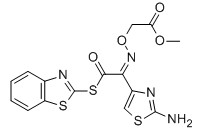
For Cefixime
EHATA
CAS No: 64485-82-1
Purity: ≥98%

For Ceftazidine
2-Chloroadenine
CAS No: 1839-18-5

For Cladribine, Fludarabine et al
Bicyclo(2,2,1)Heptane-2,3-di-exo-carboximide
CAS No: 14805o-29-9

For Lurasidne
(R,R)-1,2-Bis(methanesulfonyloxy methyl)Cyclohexane
CAS No: 186204-35-3

For Lurasidone
3-(Piperazin-1-yl)benzol[d] isothiazole
CAS No: 87691-87-0
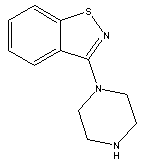
For Lurasidone
Trityl olmesartan
CAS No: 144690-92-6
Purity: ≥98%
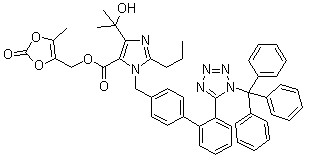
For olmesartan
3-Acetyl Pyridine
CAS No: 350-03-8

For Risedronate Sodium
3-(AceticAcid)pyridine HCL
CAS No: 6419-36-9

For Risedronate Sodium
Risedronic Acid
CAS No: 105462-24-6

For Risedronate Sodium
3-Hydroxy-1-adamantyl-D-Glycine
CAS No: 709031-29-8

For Saxagliptin
(1s,3s,5s)-3-(aminocarbonyl)-2-azabicyclo(3,1,0) hexane-2-carboxylic acid tert-butyl ester
CAS No: 361440-67-7

For Saxagliptin
(S)-N-Boc-3- hydroxy-adamantylglycine
CAS No: 361442-00-4
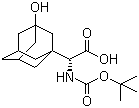
For Saxagliptin
2-Azabicyclo[3.1.0] hexane-3-carbonitrile, (1s,3s,5s)-
CAS No: 866083-42-3

For Saxagliptin
Ethyl 3-(pyridin-2-ylamino) propanoate
CAS No: 103041-38-9

For Dabigatran
N-(4-Cyanophenyl) glycine
CAS No: 42288-26-6
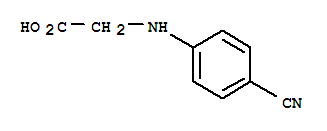
For Dabigatran
4-methylamino-3-nitrobenzoic Acid
CAS No: 41263-74-5

For Dabigatran
S-3-Amino-3-phenylpropanoic acid ethyl ester HCL
CAS No: 167834-24-4

For Dapoxetine
(S)-3-Amino-3-Phemylpropan -1-ol
CAS No: 82769-76-4
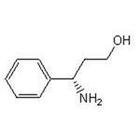
For Dapoxetine
(S)-3-Dimethylamino-3-Phemylpropanol
CAS No: 82769-75-3

For Dapoxetine
4-{4-[4-(hydroxydiphenylmethyl)-1-piperidinyl]-1-butynil}-α,α-dimethyl benzene acetic acid
CAS No: 832088-68-3
For Fexofenadine HCl
Methyl 2-(4-(4-chlorobutanoyl)phenyl)-2-methylpropanoate
CAS No:154477-54-0

For Fexofenadine HCl
5-Bromo-2-chlorophenyl)(4-ethoxyphenyl)methanone
CAS No 461432-22-4

For Dapagliflozin
4-(5-Bromo-2-chlorobenzyl)phenyl ethyl ether
CAS No :461432-23-5

For Dapagliflozin
Apple tree cultivation techniques
